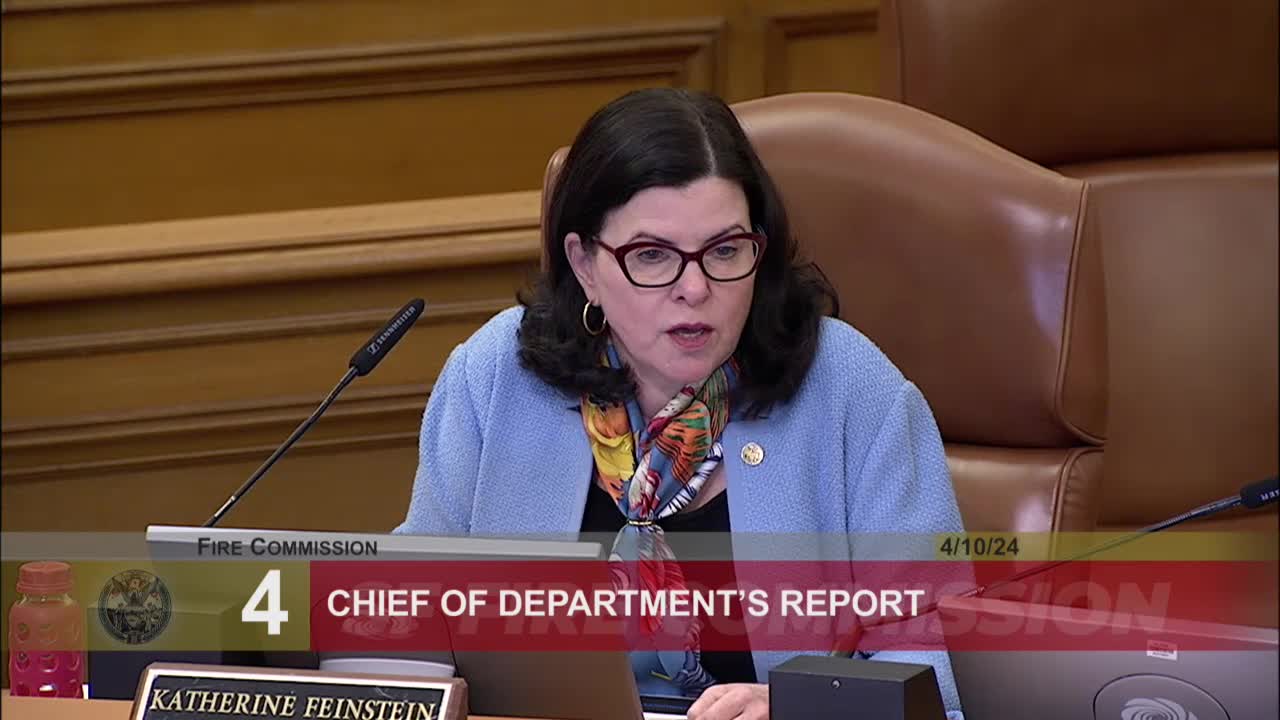San Francisco Fire Department assesses impact of autonomous vehicles on emergency response
April 10, 2024 | San Francisco City, San Francisco County, California

This article was created by AI summarizing key points discussed. AI makes mistakes, so for full details and context, please refer to the video of the full meeting. Please report any errors so we can fix them. Report an error »

In the heart of San Francisco's city hall, a pivotal meeting unfolded, shedding light on the pressing challenges faced by the city's emergency services, particularly in the context of the rising presence of autonomous vehicles. As discussions progressed, the urgency of ensuring public safety became increasingly apparent, especially regarding how these vehicles interact with emergency responders like ambulances.
Commissioner Feinstein raised a critical concern about the potential dangers posed by autonomous vehicles, particularly their impact on ambulance response times. He highlighted alarming incidents reported in the latest monthly review, emphasizing that delays caused by these vehicles could lead to avoidable fatalities. "We need to know what our interior statistics are," he urged, advocating for a comprehensive reporting system to track incidents involving autonomous vehicles and emergency services. The San Francisco Fire Department has been at the forefront of this initiative, uniquely positioned as one of the few departments nationwide actively collecting data on such interactions.
Deputy Chief Sandra Tong then took the floor to present updates from the Emergency Medical Services (EMS) division. She detailed a significant shift in operations with the introduction of motorized gurneys, designed to enhance safety and efficiency for paramedics. While the transition has been met with some apprehension among staff, the long-term benefits are expected to outweigh initial challenges. "This is a critical piece," Tong noted, as the new ambulances require adaptations to accommodate the heavier equipment.
The meeting also addressed the increasing call volume from navigation centers, where many unhoused individuals reside. Commissioner Frazier inquired about formal medical support agreements with these centers, revealing a gap in structured medical care for vulnerable populations. Tong acknowledged the high number of calls but noted the absence of dedicated medical staff at these facilities, underscoring the need for a more coordinated approach to address the health needs of these communities.
As the meeting drew to a close, the commissioners expressed their appreciation for the ongoing efforts of the EMS team, particularly in managing complex cases involving frequent 911 callers. The discussions highlighted a commitment to improving emergency response and community health, setting the stage for future initiatives aimed at enhancing public safety in San Francisco. With the challenges of autonomous vehicles and the needs of the city's most vulnerable residents at the forefront, the path ahead promises to be both demanding and crucial for the well-being of the community.
Commissioner Feinstein raised a critical concern about the potential dangers posed by autonomous vehicles, particularly their impact on ambulance response times. He highlighted alarming incidents reported in the latest monthly review, emphasizing that delays caused by these vehicles could lead to avoidable fatalities. "We need to know what our interior statistics are," he urged, advocating for a comprehensive reporting system to track incidents involving autonomous vehicles and emergency services. The San Francisco Fire Department has been at the forefront of this initiative, uniquely positioned as one of the few departments nationwide actively collecting data on such interactions.
Deputy Chief Sandra Tong then took the floor to present updates from the Emergency Medical Services (EMS) division. She detailed a significant shift in operations with the introduction of motorized gurneys, designed to enhance safety and efficiency for paramedics. While the transition has been met with some apprehension among staff, the long-term benefits are expected to outweigh initial challenges. "This is a critical piece," Tong noted, as the new ambulances require adaptations to accommodate the heavier equipment.
The meeting also addressed the increasing call volume from navigation centers, where many unhoused individuals reside. Commissioner Frazier inquired about formal medical support agreements with these centers, revealing a gap in structured medical care for vulnerable populations. Tong acknowledged the high number of calls but noted the absence of dedicated medical staff at these facilities, underscoring the need for a more coordinated approach to address the health needs of these communities.
As the meeting drew to a close, the commissioners expressed their appreciation for the ongoing efforts of the EMS team, particularly in managing complex cases involving frequent 911 callers. The discussions highlighted a commitment to improving emergency response and community health, setting the stage for future initiatives aimed at enhancing public safety in San Francisco. With the challenges of autonomous vehicles and the needs of the city's most vulnerable residents at the forefront, the path ahead promises to be both demanding and crucial for the well-being of the community.
View full meeting
This article is based on a recent meeting—watch the full video and explore the complete transcript for deeper insights into the discussion.
View full meeting
